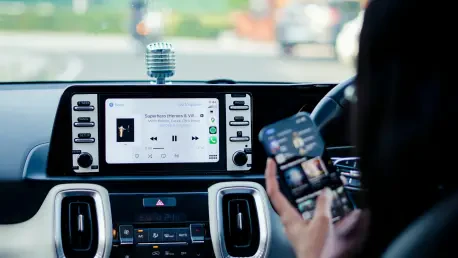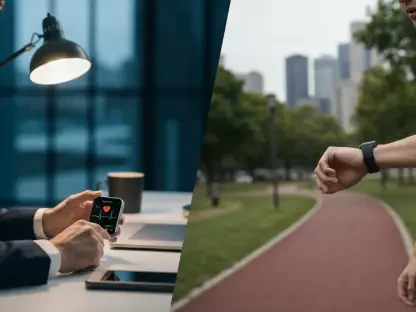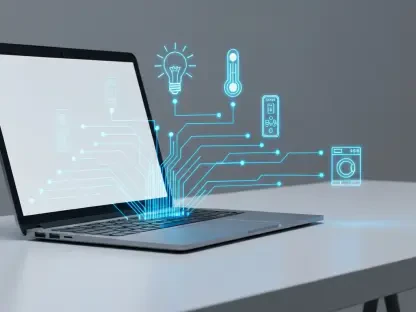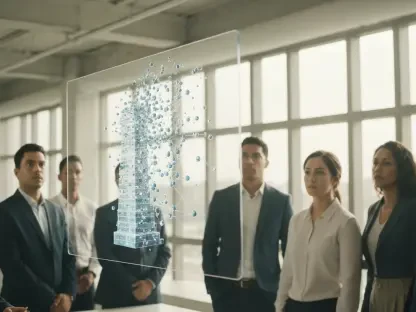Apple’s recent rollout of iOS 26 introduces significant CarPlay enhancements, reflecting a deliberate focus on achieving safer and more efficient in-car connectivity. This development emphasizes Apple’s enduring commitment to technological refinement and user-centric design. Designed to extend the aesthetic principles and functional improvements prominent in iOS 26, these updates embody Apple’s seamless integration across devices. By creating a digital ecosystem that transcends typical device boundaries, Apple sets a benchmark for innovative automotive solutions. The enhancements extend beyond mere aesthetics, aiming to reduce distractions and improve driver focus by enabling intuitive and swift interaction with digital content. Such advancements are not only crucial for enhancing user experience but also pivotal in aligning with modern safety standards. This decisive shift highlights Apple’s dedication to addressing evolving industry demands and the intricate needs of tech-savvy consumers.
Design Overhaul with Liquid Glass
Central to the CarPlay enhancement is a design overhaul underpinned by the introduction of a new ‘Liquid Glass’ interface. Apple has embarked on transforming CarPlay aesthetics with this innovative design, characterized by a visually compelling and interactive user experience. Unlike traditional static layouts, this dynamic design facilitates easier, faster user interactions, optimizing safety by reducing the time drivers spend managing digital interfaces. The brighter interface ensures clarity and intuitiveness, thus minimizing potential distractions. Users can interact with app content effectively without disrupting the driving experience. By redefining how app icons interact within the system, Apple addresses an overarching narrative of aesthetic fluidity intertwined with functionality. This design concept enhances engagement by allowing content to merge seamlessly with its environment, offering users an immersive experience that bridges the gap between aesthetics and efficiency, ultimately contributing to safer in-car navigation and interaction.
Furthermore, the Liquid Glass approach aligns with broader changes seen across Apple’s ecosystem, representing a unified aesthetic across different device interfaces. This consistency strengthens the user experience by ensuring seamless transitions between Apple devices, irrespective of their form factor. The CarPlay visual upgrade reflects the sophistication of integrating cutting-edge design principles with practical functionality. The shift towards a more dynamic graphical interface not only improves user satisfaction but also underscores Apple’s strategic direction in automotive technology; reducing on-road distractions is vital for ensuring user safety. The design advancements highlight Apple’s nuanced approach to user interaction, where visual appeal and ease of use form the core of tech-enhanced automotive engagement. Building on this foundation, Apple cements its position at the forefront of evolving digital interaction methodologies, setting a standard in aesthetic design while promoting a safer driving environment.
Practical Functionality Enhancements
Beyond aesthetics, Apple’s upgrades bring about substantial enhancements in practical functionality, meticulously designed to minimize driver distraction. A notable aspect is the introduction of a new compact view for incoming calls, which significantly reduces interruptions. Previously, incoming calls would disrupt on-screen activities like navigation; however, now, call notifications are presented as a less intrusive overlay pop-up. This new feature empowers users to make informed decisions about whether to answer calls without obstructing crucial driving activities. This innovation aligns with a wider industry trend prioritizing functionality focused on maintaining driver concentration and safety. Such functionality is increasingly critical as automotive technology advances, integrating complex features that facilitate driver focus and operational ease, thereby contributing to safer driving experiences.
The introduction of Tapbacks and pinned conversations in CarPlay’s messaging service mirrors this emphasis on safety and efficiency. By enabling quick, emoji-based responses and the ability to keep track of essential conversations easily, these features aim to reduce the time drivers spend interacting with messages. The design fosters efficient information exchange with minimal distraction, highlighting Apple’s commitment to enhancing digital communication within automotive settings. Such innovations signify a broader move towards simplified interaction models, recognizing that user attention remains divided between driving and digital task management. These functional enhancements conform with Apple’s mission to provide seamless, safe, and engaging in-car digital environments that resonate with the demands of modern transportation and technological convergence.
Widget-Based Layout and Call Management
The upgraded widget-based layout within CarPlay signifies another substantial leap forward, merging Apple CarPlay Ultra’s features and those familiar to Android Auto users. The redesign allows multiple applications to function concurrently on a single display, thereby eliminating the need to switch screens continuously. This update proves particularly advantageous for drivers requiring comprehensive access to diverse types of information, such as navigation, music control, and real-time traffic updates. Keeping essential data available at a glance empowers users to remain informed while concentrating on driving, thus promoting both convenience and safety.
Another significant functionality introduced with iOS 26 is enhanced call management. Features such as Call Screening, which builds upon the existing Live Voicemail function, furnish users with necessary contextual information about incoming calls. This allows users to decide if answering a call is warranted, reducing disruptions caused by spam and unwanted calls. Additionally, the Hold Assist feature automates call hold management, enabling users to resume tasks while waiting for an operator to be available, eliminating the burden of unnecessary hold music. These advanced features denote Apple’s relentless focus on refining operational efficiency while reducing distractions, embodying a holistic approach to mobile connectivity that harmonizes technology with everyday use.
The Broader Implications of CarPlay’s Upgrades
At the heart of Apple’s CarPlay upgrade is a revamped design that introduces a ‘Liquid Glass’ interface, aiming to transform the visual and interactive experience for users. This innovative design moves away from static layouts and offers a dynamic interaction that enhances both speed and ease of use, helping drivers spend less time managing digital controls and more time focusing on the road. The brighter and clearer interface aims to reduce potential distractions and improve the intuitiveness of user interactions. By reimagining how app icons function within the system, Apple combines aesthetics with practical functionality, merging content seamlessly with its surroundings for an immersive experience. This redesign contributes significantly to safer driving and navigation.
The Liquid Glass interface aligns with Apple’s broader strategy of creating a consistent aesthetic across all devices, improving the user experience. This visual update not only reflects advanced design but also shows Apple’s commitment to reducing on-road distractions, thereby heightening user safety. It emphasizes Apple’s focus on blending visual appeal with utility, solidifying its leadership in tech-driven automotive innovation and setting new standards for digital interaction while promoting safety and efficiency on the road.









